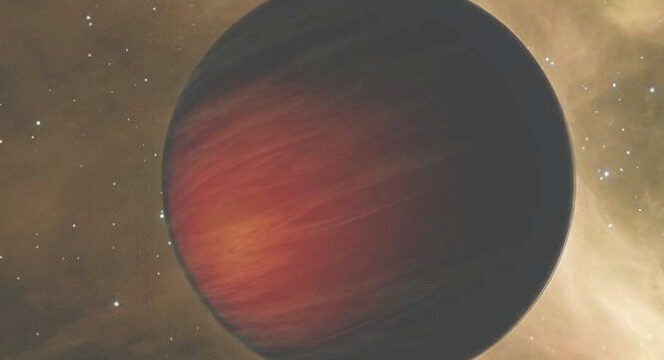
In the effort to comprehend planetary systems beyond our own, the discovery of water vapour in the atmosphere of Smertrios, an exoplanet in the far reaches of our galaxy, represents a critical turning point. This discovery advances both our understanding of Smertrios and the overall hunt for habitable worlds. The procedure of finding, planetary science ramifications, and the possibility of life on Smertrios are all examined in this research.
The Method of Discovery
Cutting-edge astronomical tools and creative methods came together to enable the finding of water vapour in Smertrios’ atmosphere. Utilising space-based telescopes, such as the Hubble Space Telescope (HST) and the James Webb Space Telescope (JWST), was essential to this process. The feeble light that far-off exoplanets emit or reflect while they pass in front of their home stars can be recorded and examined by these equipment.
Spectroscopy and Analysis of Light
Spectroscopy was essential in the identification of water vapour. Light from Smertrios’ star filtered through the planet’s atmosphere as it passed in front of it. High-resolution spectrometers, which can identify particular wavelengths absorbed by various compounds, were then used to analyse this light. With its improved infrared capabilities, the JWST was especially helpful in identifying the distinctive absorption properties of water vapour in the infrared spectrum.
Verification of Data and Peer Review
Although preliminary findings indicated the presence of water vapour, careful study and peer review were necessary for confirmation. Teams of astronomers excluded other causes of the observed spectrum characteristics by cross-referencing their results with information from other telescopes and atmospheric models. The evidence for water vapour was bolstered by the consistency of several observations and approaches.
Relevance to Astronomical Sciences
Significant ramifications for planetary science and the investigation of exoplanets result from the discovery of water vapour on Smertrios.
Understanding Smertrios’s atmospheric composition can help one better understand the planet’s climate and weather patterns. An essential part of Earth’s climate system, water vapour affects temperature regulation, clouds, and weather. Similar mechanisms may be at work on Smertrios, as indicated by the existence of water vapour, which could have an impact on the planet’s habitability.
Comparative Astronomy
Scientists can create more comprehensive ideas about planetary origin and evolution by comparing Smertrios to other exoplanets that are currently known. Astronomers can improve their models of how planets form their atmospheres and what circumstances can support life by examining a wide variety of exoplanets with different atmospheric compositions.
The Possibility of Life
The ramifications of this discovery for the hunt for extraterrestrial life are among its most intriguing features. Since water is vital for life as we know it, the presence of water on Smertrios suggests that life may exist there or that the planet may have the circumstances needed for life to evolve.
Criteria for Habitability
A planet needs to fulfil a number of requirements in order to be classified as possibly habitable. These include being in the star’s habitable zone, where temperatures are enough for liquid water to exist, and having an atmosphere that is stable enough to support complicated chemistry. Although the finding of water vapour is encouraging, more research is required to evaluate whether Smertrios satisfies all of these requirements.
Prospective Investigation
The primary goal of further Smertrios research missions will be to get more precise data regarding the planet’s surface characteristics, atmosphere, and possible biosignatures. Large UV/Optical/IR Surveyor (LUVOIR) and the projected Habitable Exoplanet Observatory (HabEx) are two important missions that will be involved in these efforts. With remarkable precision, these next-generation telescopes will be able to directly observe exoplanets and analyse their atmospheres.
Methodologies and Technological Developments
The relevance of technological developments in astronomy is shown by the discovery of water vapour in Smertrios’ atmosphere. This accomplishment has been made possible by advancements in data analysis methods, detector sensitivity, and telescope design.
Technological Developments in Telescopes
Our capacity to investigate exoplanets has advanced significantly with the launch of the JWST. More light can be captured and finer details can be resolved than with any previous space telescope thanks to its big primary mirror and sophisticated equipment. The capacity to detect the feeble signals from far-off exoplanets depends on this skill.
Data analysis and machine learning
The enormous volumes of data produced by telescopes are progressively being processed and analysed using machine learning algorithms. The efficiency and accuracy of exoplanet discoveries can be increased by using these algorithms to find patterns and traits that conventional analytical techniques might overlook.
Obstacles and Prospects for the Future
Although the finding of water vapour on Smertrios is an important finding, it also emphasises the difficulties astronomers encounter when researching far-off planets.
Interpretation of Data
It is difficult to interpret the data from exoplanet observations. Several factors, such as atmospheric dynamics, star activity, and experimental noise, might induce variations in the observed spectra. It is a continuous struggle to develop robust models that read these signals appropriately.
Extending the Look
We are only beginning our quest for habitable exoplanets. Though thousands of exoplanets have been found, very few have undergone extensive research. To broaden this exploration, the scientific community must collaborate internationally and maintain funding for sophisticated telescopes.
In summary
In terms of exoplanet research, the finding of water vapour in Smertrios’ atmosphere is historic since it provides new information on the planet’s features and expands the possibility of habitable worlds outside our solar system. The study of exoplanets like Smertrios will continue to push the frontiers of our knowledge and bring us closer to providing an answer to the important question of whether we are alone in the universe as long as technology grows and our ability to see things improves.